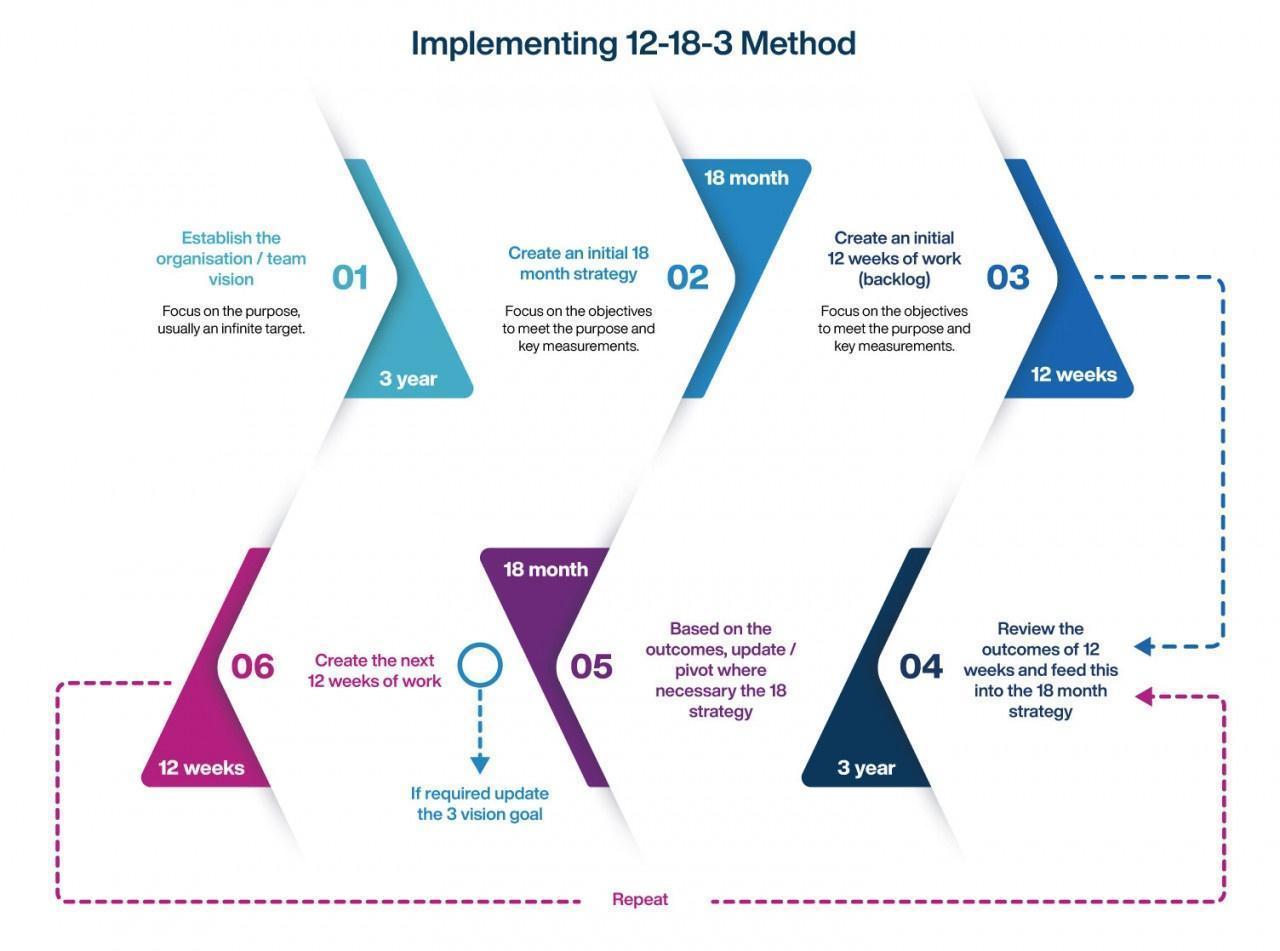The 12-18-3 method - opening the door to accelerated innovation and continuous learning
The digital landscape is evolving at a rate that's never been seen before and is set to continue accelerating in the years ahead. In such a fast-paced environment, the ability to work flexibly, responding to unexpected challenges and optimising the time-to-market for new innovations, is critically important for all organisations - whether they're ambitious start-ups or established global leaders. While IT infrastructure must certainly support this - hence the widespread phasing out of legacy infrastructure in favour of increasingly sophisticated Cloud transformation strategies - any new technology will be of limited effectiveness if processes and methodologies do not evolve in parallel.
This call for a fundamental transformation at the corporate, departmental, and individual levels, which can prove highly challenging in most organisations. However, DevOps provides a proven, effective system for working in a more agile, dynamic way, without compromising efficiency or results.
This is the Twelve, Eighteen, Three (12-18-3) method.
What does 12-18-3 mean, and why is it a critical component of effective DevOps practices?
At first glance, 12-18-3 is a simple concept:
- 12 weeks of tasks - individual goals assigned to teams and individuals, to be tracked and measured. This can be broken down even further into two-week sprints to ensure it remains manageable and that results are measured and analysed, with the findings acted upon.
- An 18-month strategy - A 'finite target', to ensure tasks remain aligned and that OKR's (Objectives and Key Results) are established and measured against. Based on the outcomes of each 12-week cycle of tasks, you can update your 18-month strategy every quarter, allowing teams to adjust their priorities, depending on how both the organisation and the digital landscape has evolved since the last review.
- A three-year vision - an 'infinite target' (sometimes known as the 'purpose of the organisation') for where the organisation as a whole wants to be in three years' time. Bear in mind that this does not mean a comprehensive, detailed vision - a few slides setting out the organisation's long-term goals in the broadest terms is typically sufficient.
In many ways, this is the opposite of the traditional 'waterfall' approach adopted by many organisations, where a fixed 'five-year plan' forms the basis of everything teams and individuals do throughout the year.
The problem with this model is that it emphasises large-scale, long-term goals rather than immediate challenges and opportunities. Not only does this not suit the majority of people, who tend to function better when they are able to work through smaller, more focused goals, it is increasingly unsuitable for the modern digital landscape, where the increased speed of innovation and rapid shifts makes such planning impractical. 12-18-3 takes the opposite approach, emphasising the setting and completion of concrete, individual goals that collectively support a long-term vision, while utilising the lessons learned along the way to steer the organisation more effectively, establishing achievable goals that deliver powerful, sustainable change.
The 12-18-3 method has already been utilised to great effect across sectors ranging from finance to space travel, but its full potential has still yet to be realised. By freeing individuals, teams, and organisations to pivot in response to the unexpected, shifts in the digital landscape can be viewed in terms of the opportunities opened up rather than the disruptions created.
Consider the challenges created by COVID-19 throughout 2020 and 2021. The move towards hybrid working in response to lockdown measures demonstrated the importance of optimal flexibility in terms of remaining as close to business-as-usual in the face of an unprecedented disruption. 12-18-3 helps embed the same level of flexibility and agility within company cultures and working practices, allowing for the kind of initiative and innovation that would typically be impractical - or even impossible - with other working models.
If you would like to find out more about embedded effective DevOps practices across your own organisation, and how Exponential-e can help you do so, please read our brochure, Digital Transformation and DevOps.
DevOps - the convergence of development and operations – is driving the digital transformation of future-minded organisations across a range of sectors, helping them develop world-class IT infrastructure while simultaneously developing more agile, dynamic approaches to working that suit the evolving digital landscape. In this brochure, you will discover a proven, effective process for establishing your current level of DevOps maturity and take the first steps to establishing your own DevOps culture.
When you subscribe to the blog, we will send you an e-mail when there are new updates on the site so you wouldn't miss them.


